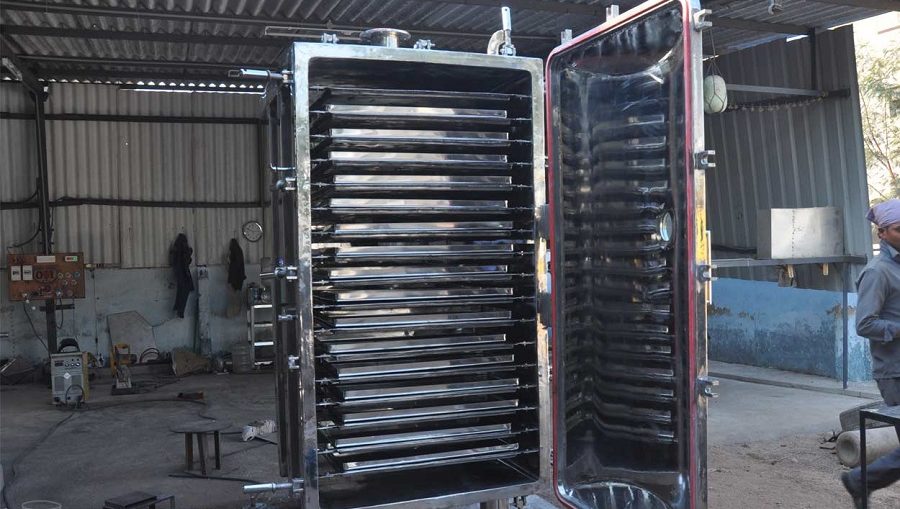
The vacuum tray dryer is used to dry oxygen-sensitive, high-grade temperature products. They are normally box-shaped with a door for loading and unloading. Several heating plates are arranged one above the other inside the vacuum tray dryer, and the drying products are put over the plates. The bottom surface of plates, as well as the trays, should be extra smooth in order to allow the transfer of maximum heat in between the products and plates. Water, steam or thermal oil are the medium for flowing the heat through the plates. The foaming of the product and the surface loading determine the distance between the plates. The heating plates heat the cabinet walls prior to the overall heating process in order to avoid retrograde condensation. The products are put on the plates and heated by atmospheric pressure. Get in touch with Harvest Right freeze dryers for all types of best and durable vacuum tray dryers.
The preheating phase in the vacuum tray dryer is considered very important because of the factor that the foaming of the product, as well as the drying curve, are identical all through the cabinet. The vacuum remains at the range of 40 to 80 mbar abs during the main drying phase which eventually decreases in the final drying phase. In the process, the heating temperature stays at about 800c to 1100c depending on the surface load and depending on the product. Similarly, the heating process normally takes a few hours to one or two days based on the types of products.
The vacuum and the temperature are further regulated and automatically controlled for specific products for preventing a critical product temperature pass over. The dimension in the vacuum system plays a critical role in the entire design of the vacuum drying cabinet system. For example, evacuation of the operational vacuum level should happen very quickly if vigorous foaming is a necessity for a product. The vapour produced in the process is channelized directly or through a steam jet compressor for further condensation in the surface condenser. Ultimately, the vacuum system extracts the non-condensable vapours. In the end, as the drying is completed, the products are cooled by cold water circulation through the heating plates.
There are basically two types of dryers i.e. the spray dryers and the rotary dryers. In the case of spray dryer, the material is sprayed into the hot air chamber which at the end falls at the bottom as dry powder. On the other hand, in a rotary dryer, materials are fed into a rotating drum where it is dried either by heating the drum or by hot air.
